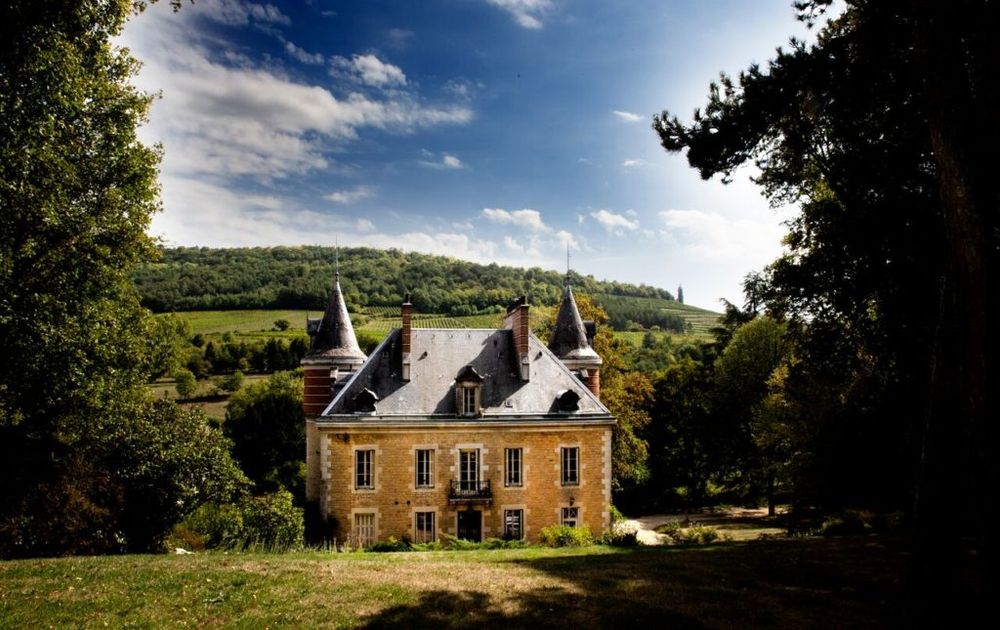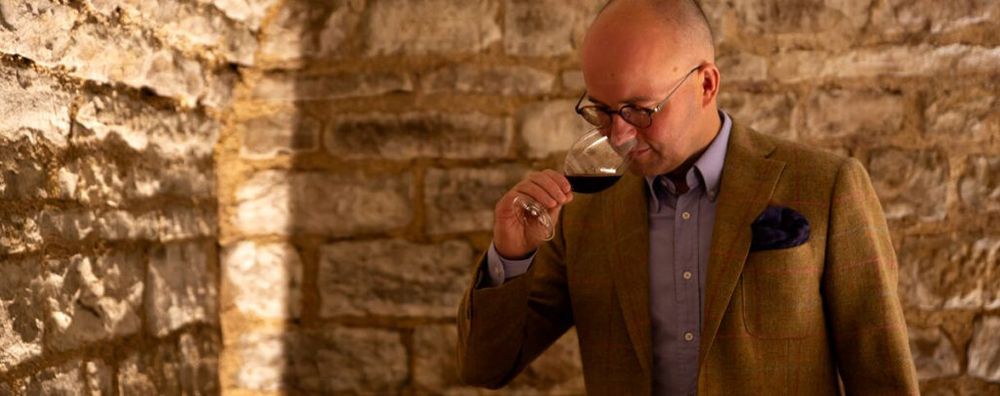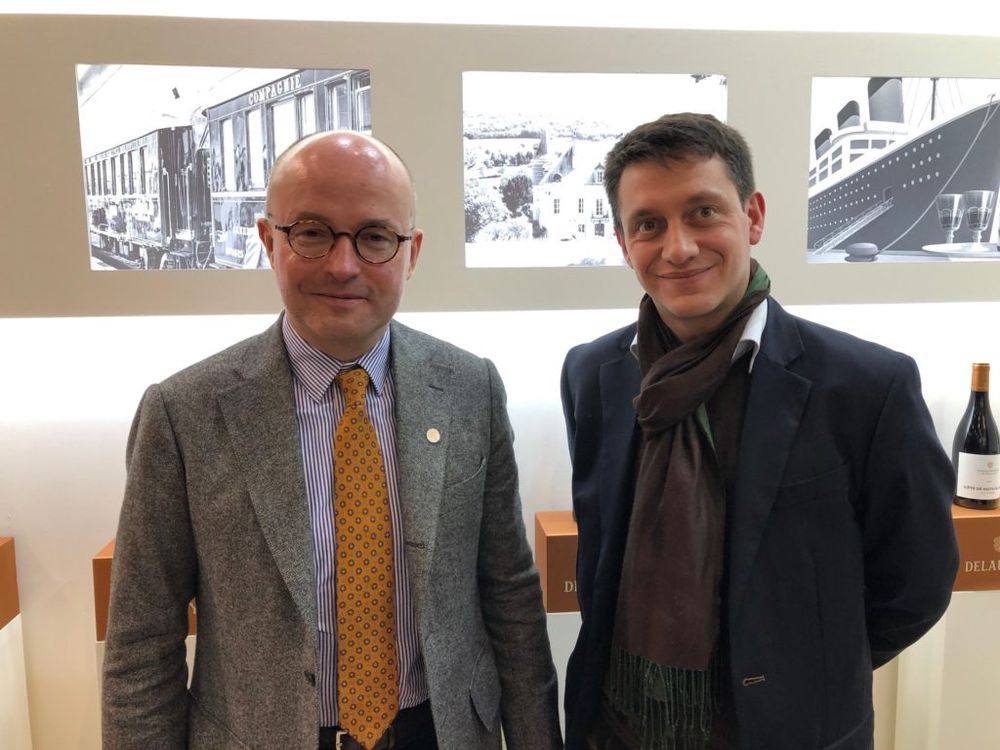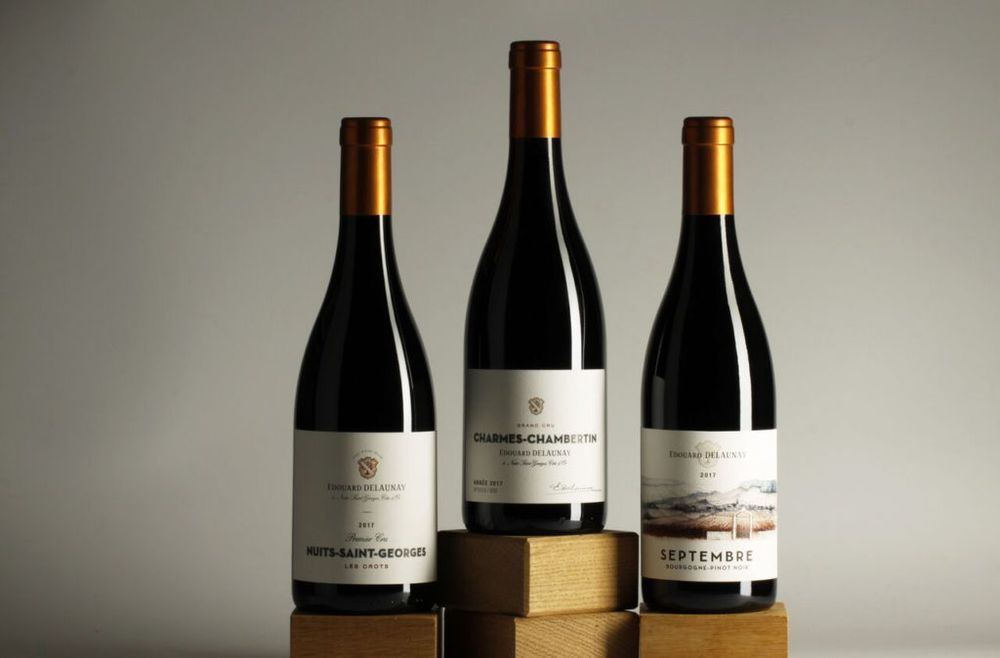Within two years Laurent Delaunay has been able to buy back and bring back to life his family estate in Burgundy. Here he explains how and why he did it.
One of the enduring aspects of the wine trade that separates it from most other grocery sectors or brands you can find on an average drinks list is how its future is so inextricably linked with the history of the families that are behind so many of our famous wines.
In fact if you stripped all families out of the overall wine industry it would look very different. Particularly in areas of the Old World like Burgundy and Bordeaux where generation after generation have been able to keep the family name for decades if not centuries.
Even when a business falls out of winery control, there is nothing to stop a future generation stepping in to bring that same business back into the family fold. Which is very much what has happened in Burgundy with the deal in 2017 by acclaimed Burgundy wine figure in his own right, Laurent Delaunay, president of Badet Clément, to take back control of the estate originally owned by his great grandfather Edouard Delaunay, that dates all the way back to 1893.

Chateau de Charmont is now back in the Delaunay family fold
Based at the Château de Charmont in the Hauts Côtes de Nuits, the estate had become respected and regarded as one of Burgundy’s finest names. But when illness struck in 1992 Laurent’s father, Jean-Marie Delaunay, the decision was made to sell it to the Boisset family.
Coming home
Twenty five years on and the opportunity came about for Laurent Delaunay to take the estate back. An opportunity he grasped with both hands, even though he was buying a very different kind of business to the one that had made its name in the first three quarters of the last century. As the promotional material for the new Edouard Delaunay winery says the estate “had progressively been sinking into oblivion”.
But there again that was part of the challenge. The chance, as Delaunay says, to “return it to its former glory and make Edouard Delaunay a leading Burgundian wine house once more”. A producer “focused on excellence and high-end wines mainly from the Côte de Nuits and Côte de Beaune”.
“It’s fantastic. What I am living now is like a dream,” he says.
Or as the promotional brochure claims a “mission” to “regain its place within the inner circle of the great houses of Burgundy through the vinification and ageing of exceptional wines from some of Burgundy’s finest terroirs”.
To do so is going to going to cost even more than the deal to buy the business back from the Boissets. To date some €1.5m has been spent on an extensive renovation that has helped transform both the cellars and the winery. An investment programme that allowed it produce 60,000 bottles from the 2017 vintage and 100,000 bottles from last year’s and 150,000 bottles expected from the 2019 harvest. Weather permitting.
Aiming high

Laurent Delaunay has made his name in wine with the Badet Clément and DVP businesses
But then the goal to “aim high” was apparently one of the favourite sayings of Jean Delaunay, son of Edouard in its formative years, and who, along with his brother Marcel, was said to be responsible for making Edouard Delaunay wines one of the biggest exported wines out of Burgundy to markets all over the world. A wine you would expect to find at The Ritz in London, Raffles in Singapore or on the Orient Express.
It was that historical pull as much as family reasons that encouraged Laurent Delaunay to make his move with the Boissets. Plus the fact that despite his success with Badet Clément producing and creating wines in other key regions of France, most notably in the Languedoc and Provence, there was very much a gaping hole in Burgundy.
“This was the chance to do something that I was looking for,” he says. It was also a lot easier than just starting from scratch, or buying a non-family connected estate.
So nothing ventured, nothing gained, he approached Jean-Charles Boisset and convinced him in November 2017 the future of the Delaunay estate was better in his hands. Particularly as large parts of the estate had been rented out and not 100% focused one wine.
Stage by stage
Fast forward to June 2019 and the new Edouard Delaunay team have clearly achieved so much in such a small space of time.
Key to that initial – and future success – has been how quickly it has been able to get its hands on the right quality fruit to give itself a fighting chance in the fine wine circles of Burgundy. That’s where Laurent Delaunay certainly has an advantage over many of his peers in the region. Particularly as he does not actually own any vineyards himself.
But through his negociant and wine merchant business, DVP – Domaines & Vins de Propriété – that works with and sells wines from over 140 estates in Burgundy and as part of his wider Badet Clément business, he could not be better connected to find the right growers in all the key areas of Burgundy.
“The key is to find the right grapes. That’s the most important, and the most difficult.” he says. “Through DVP we have such a strong network to find the right barrels of rare wine we need.”

Delaunay has been keen to bring back some of the traditional ways of making wine in Burgundy
For it’s not just in the history books that the Delaunays have a good name in Burgundy. The growers have long memories themselves and Delaunay says he has been overwhelmed by the level of support he had from families of growers who have bought into his own dream and want to be part of the new re-born Edouard Delaunay story. “Many knew my father and want to be involved again,” he adds. “They wanted to help us.”
“It is those relationships with the growers that has been so important in allowing us to create this amazing range of wines in just two years. They love the fact the house is back and being restored,” explains Delaunay.
That said any grape still has to pass the quality threshold and great care is taken by the Delaunay winemaking team to select the right grapes for the right wines with a particular focus on Côte de Nuits and Côte de Beaune. “For a new Burgundy house to have as part of its second vintage a Gevrey Chambertin is a great achievement,” he says.
Keeping traditions alive
That also goes for the barrels each wine then goes into. One of the key aspects of the extensive renovation programme has been a desire to bring back to life some of the ways of the past, particularly in the cellars, the barrels and the cooperage skills that have been widely lost in Burgundy. Delaunay has worked with its cellarman, who himself is part of generations of cellarmen in Burgundy to either source or have custom made the special cooperage and cellar tools used over a century ago – including noyaus, sapines, soufflets, lève-fûts, cannelles, pinces, and poulains.
Part of that investment has gone into the size of barrels it is using to offer different quality characteristics for particular wines.This includes demi-muid (500 litres), the pièce (228 L), the feuillette (114 L) to the quarteau (56 L). So for each wine there will be a careful grape assortment and selection, followed by what level of toast they will use for the barrel depending on a wine’s tannins and structure.
Young talent

Laurent Delaunay with his winemaker Christophe Briotet at this year’s Wine Paris event
All of these decisions can’t be made by Laurent Delaunay alone, which brings us to his relatively young winemaker, Christophe Briotet, a former cellarmaster at the Domaine du Lycée Viticole de Beaune. By his own admission he says it is a “big responsibility” to take what is essentially a new project expected to produce at least 25 fine wines a year. “It’s a big opportunity and a wonderful chance for me to build something here,” he says.
Delaunay says it made perfect sense to bring Briotet on board. “I wanted a young, innovative winemaker as part of our team and it was clear when I interviewed him that Christophe was the right person,” he says, pointing to his many years of experience despite his young age working not just in Burgundy, but Turkey, Chile, Cognac and Champagne. I also wanted someone from Burgundy and who understands the language of Burgundy,” he explains.
Looking ahead Delaunay says it is only right considering its strong export history that the bulk of Edouard Delaunay’s wines will be sold around the world. “We want to focus on eight to 10 key markets around the world,” he says.
Currently exports make up 65% of sales but that could reach 80% in the next two to three years. “We think mature Burgundy markets like the US and UK could do well for us. But we have to be careful as there is so much competition, particularly in the US.
“Our first goal, though, is to build our image so that we are able to compete with our peers on quality first,” he explains.
Image-first approach

A classic look: The Edouard Delaunay range looks like it could have been around for decades
That image-first approach, he says, will be key to positioning the wine at what he sees as the luxury end of the market, where it can sit alongside jewellery and fashion. It’s why its plans include setting up an exclusive wine club that does not just offer you wine, but the chance to enjoy a range of personal services and exclusive opportunities like visiting the estate in Burgundy.
“We want to take lessons from Champagne in how the big brands market themselves,” he adds. “We also want to mix the artisanal, terroir background of the wines, but with it being a luxury product.”
Hence the attention to detail to the labels, the design and the packaging the wines comes in. “We want to be see as more than just a wine. The chance to discover more about real Burgundy culture, to work with our importers so that their customers feel they are part of our community. We need to find ways where we can address this high end network.”
The next stage of investment will see a full hospitality programme set up at the estate to include fine dining and potentially rooms.
As for how much wine it needs to feed such a growth programme Delaunay is less clear. “We don’t have a set target,” he claims ,but does concede that he can see production going up to 300 barrels in years three or four and that its cellars have capacity for 500 barrels.
But being a family business, it can move as quickly or as slowly as it needs. Delaunay’s father, grandfather and great grandfather would raise a glass to that.































